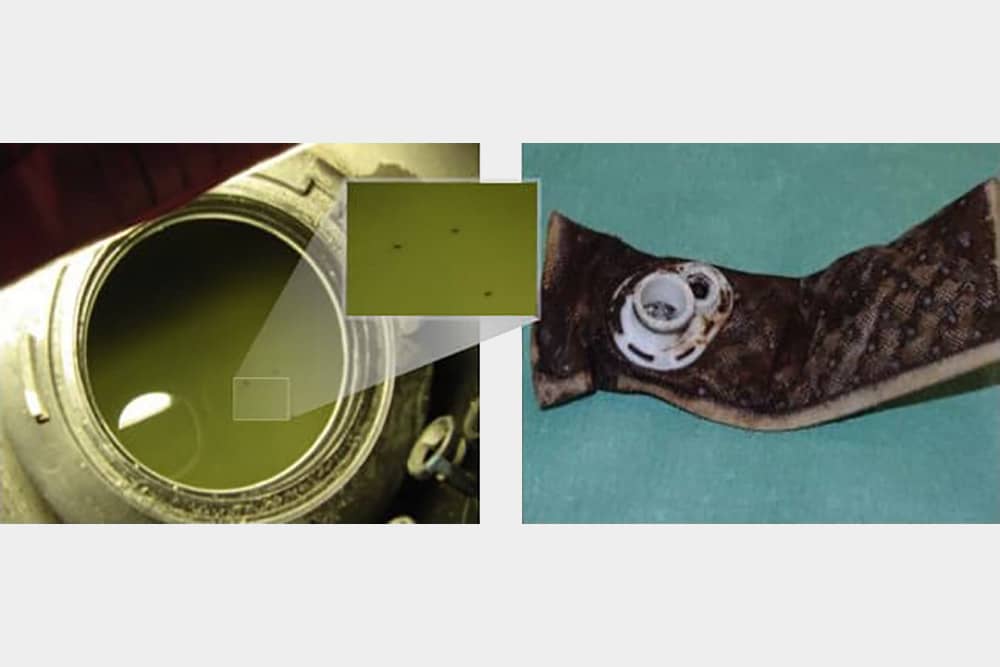How To Clean Out An Old Car Gas Tank

How to Clean a Fuel Tank
A dirty fuel tank can lead to fuel pump failures. Forbid potential problems past following these step-by-footstep instructions for proper fuel tank cleaning.
Many variables contribute to fuel pump failures. One of the most common culprits, especially when a replacement fuel pump stops working soon afterward installation, is a muddy fuel tank. It is critical that contaminants and loose debris, including rust and sediment, are removed prior to fuel pump installation every bit they can clog the filter, jam the turbine pump, or significantly reduce fuel flow due to build-up.
The single most important way to prevent this is to ensure you start the fuel pump repair procedure with a clean fuel tank.
Y'all can do this by following these step-by-step instructions for proper fuel tank cleaning:
- Drain all fuel from the tank with an approved container or a fuel caddy.
- Drop the tank (encounter your service manual for further instructions).
- Make clean expanse where the pump is being removed from with a brush.
- Remove fuel pump from tank (avoid letting residual debris fall into the tank).
- Insert hose into fuel tank and begin pouring a stream of clean, hot h2o.
- While water is filling, spray mild detergent in the tank.
- If opening allows, employ a brush to loosen debris from the sides of the tank.
- Cease stream of water.
- Swish the water effectually to ensure all debris has been captured.
- Dump muddy contaminated h2o out into a pan, being sure to capture whatsoever liquids.
- Further wipe the tank out with a lint-free washcloth.
- Dry out the fuel tank completely with compressed air.
- Inspect the tank for rust or physical impairment; if present, the tank must be repaired or replaced.
- Add fuel line antifreeze/water remover to aid blot whatever residual moisture.
- After the tank has been dried, allow information technology sit for thirty minutes.
Source: https://carterengineered.com/resources/how-to-clean-a-fuel-tank
Posted by: mileyclus1971.blogspot.com


0 Response to "How To Clean Out An Old Car Gas Tank"
Post a Comment